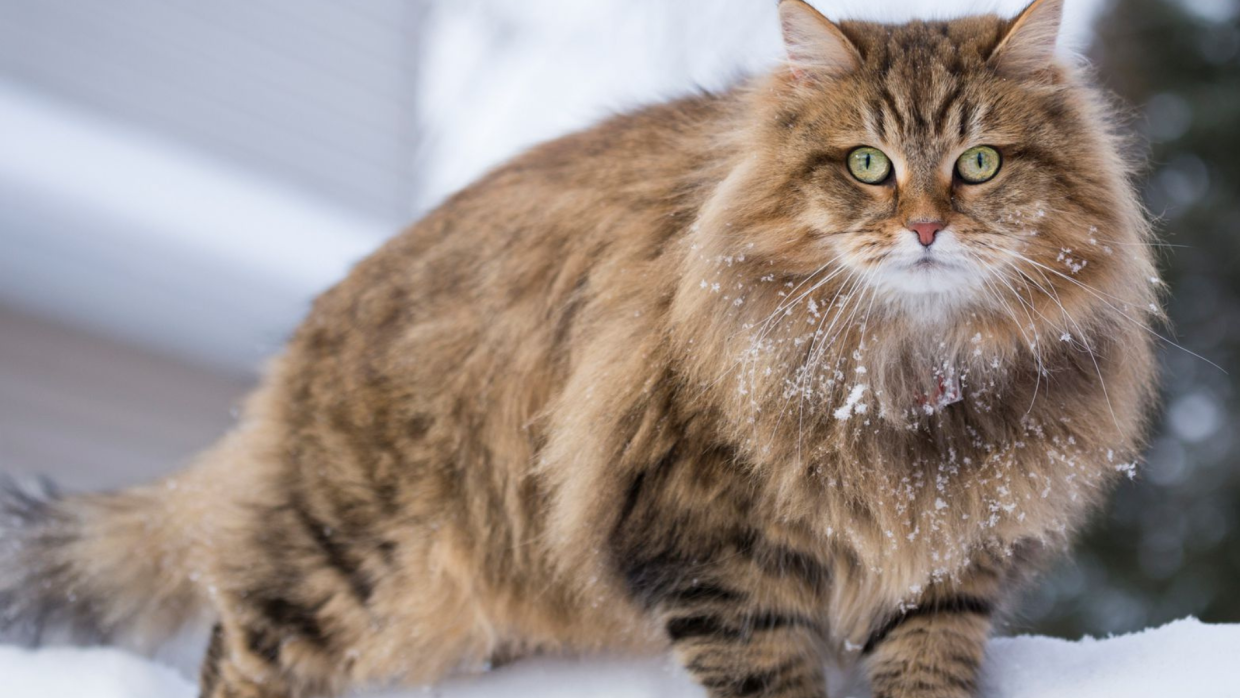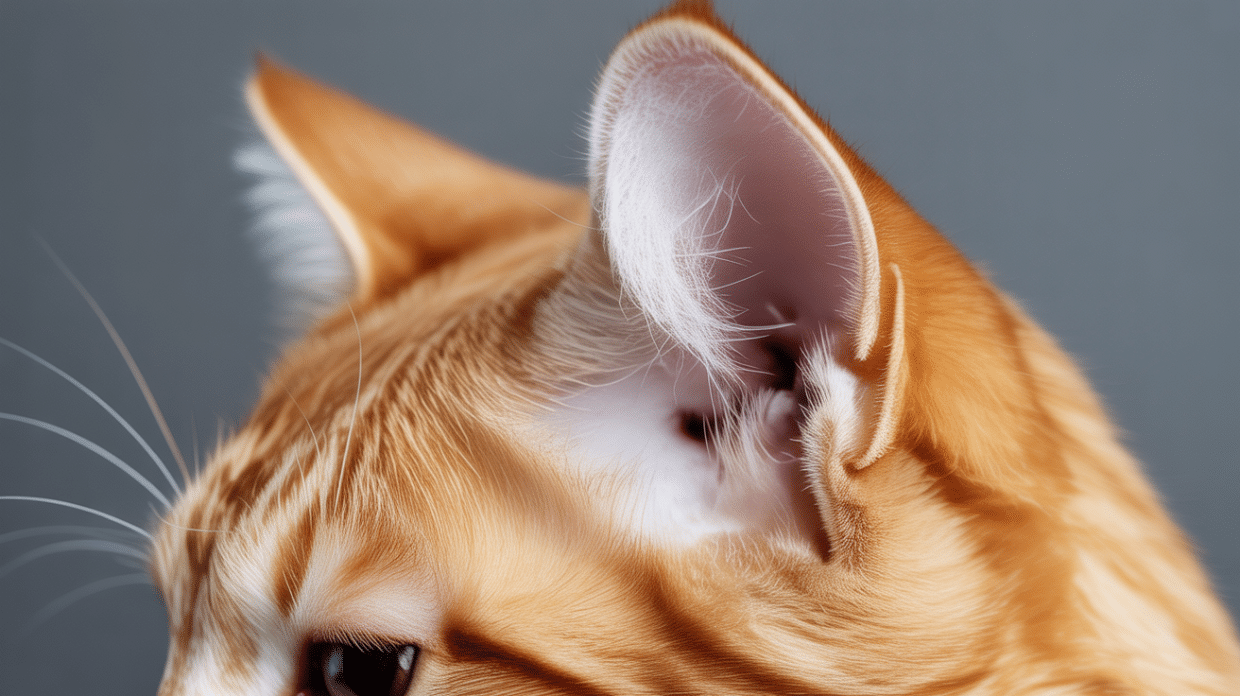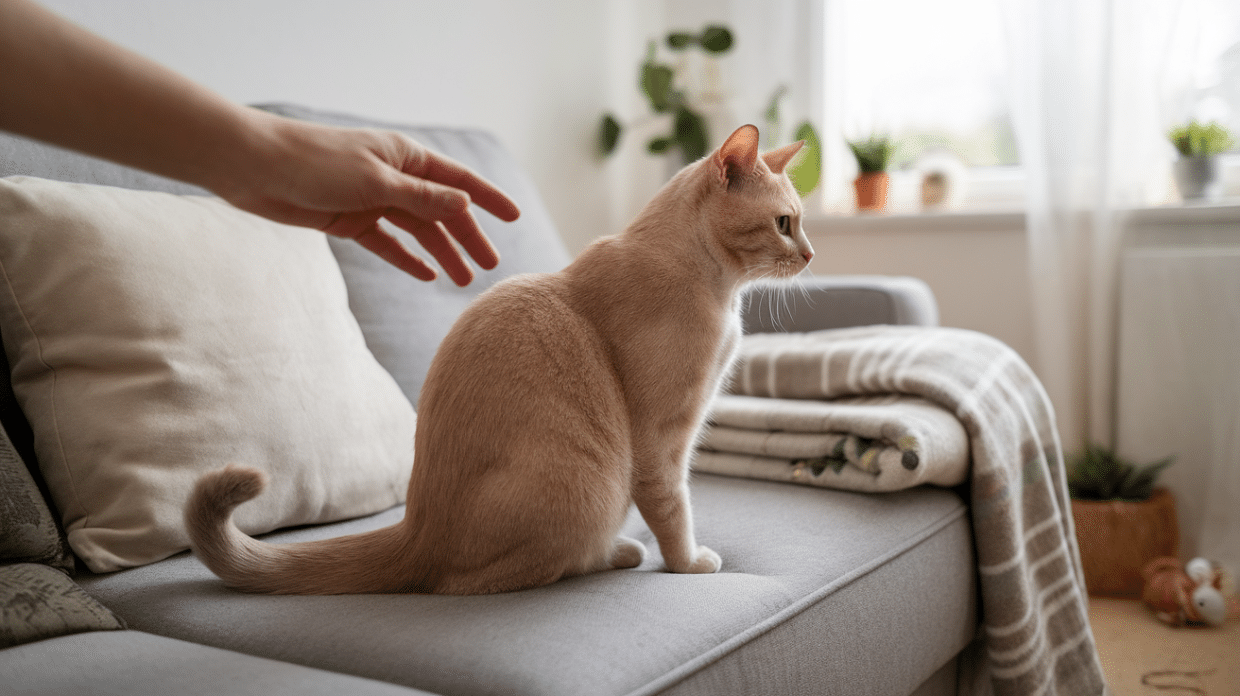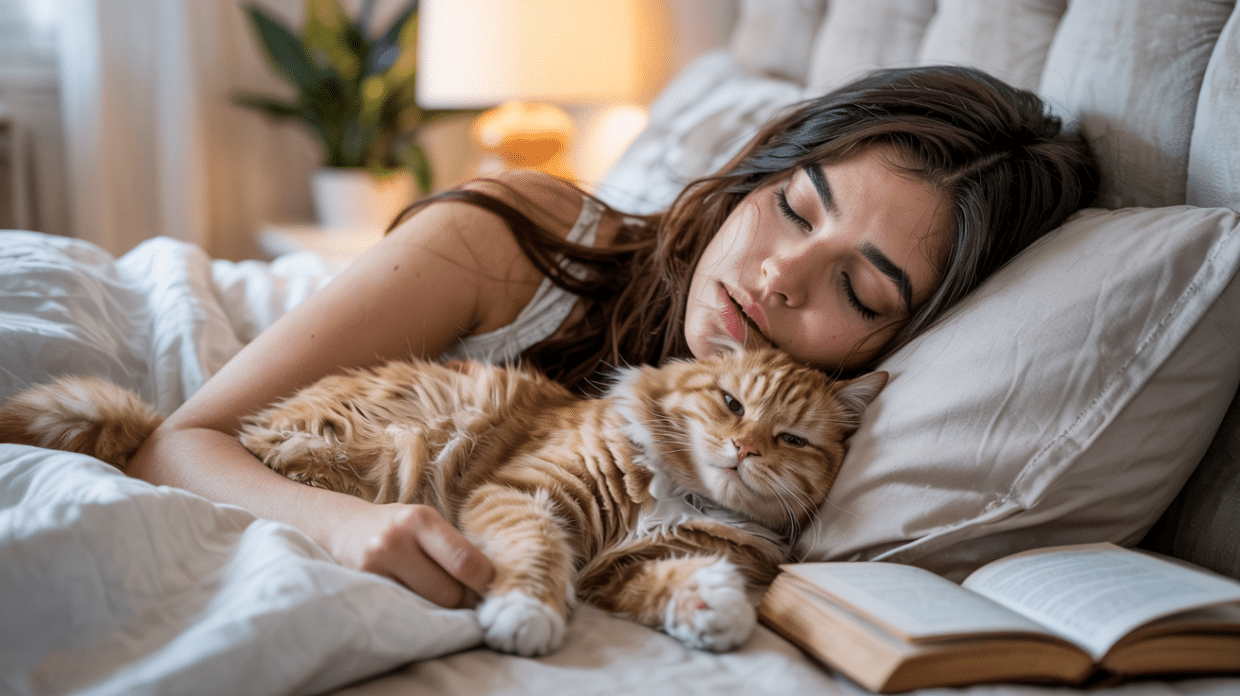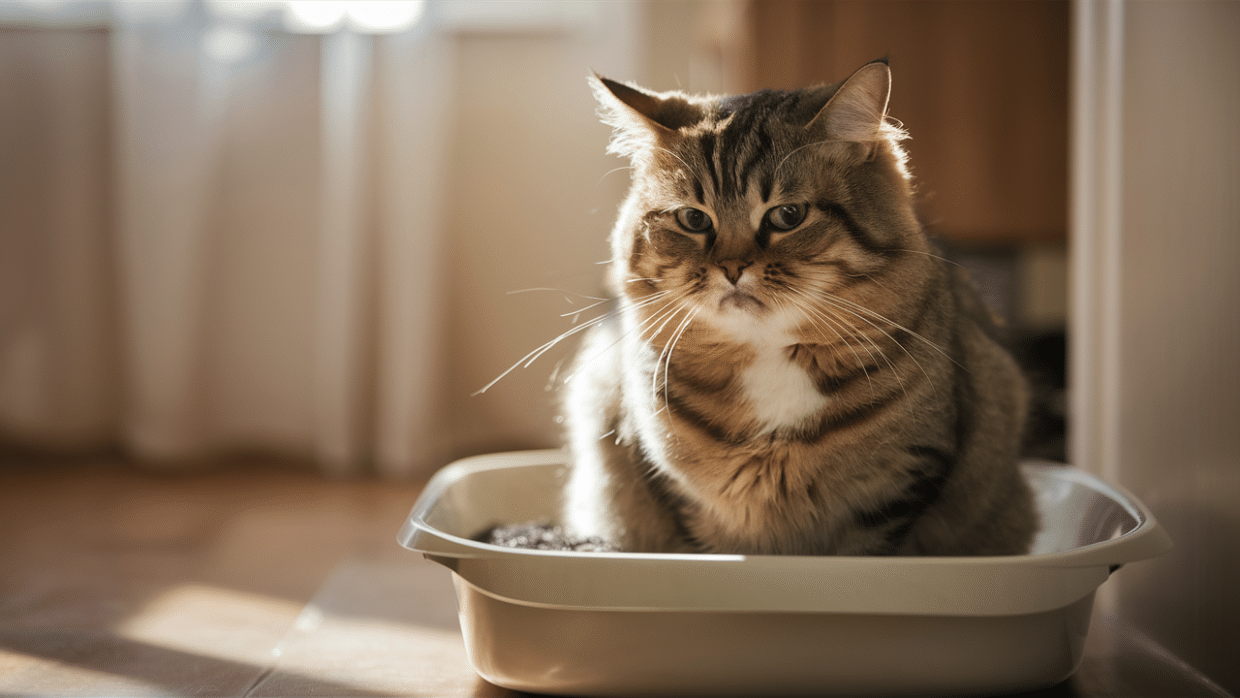Looking for a big, fluffy cat that acts more like a dog? The male Siberian cat is playful, loyal, and surprisingly easy to live with.
Many people want a pet that’s affectionate and low-maintenance, but picking the right breed can be tough.
That’s where this guide helps. You’ll learn everything about male Siberian cats, how they look, how they act, how to care for them, and how they compare to other big cats.
If you’re thinking of bringing one home or are just curious, this blog gives you the simple facts you need.
By the end, you’ll know if this gentle giant is the right match for your life, and you might be surprised by what makes him so special.
Physical Characteristics of Male Siberian Cats
Male Siberian cats are impressive in size, weighing between 6.8 and 9 kg when fully grown.
This makes them significantly larger than females, who typically reach 4.5-6.8 kg. Their robust frame matches their substantial size, giving them a commanding presence.
One of the most distinctive features of male Siberians is their fuller mane. This luxurious fur ruff around the neck creates a lion-like appearance that becomes more pronounced as they mature.
They also develop wider faces and more prominent cheekbones than their female counterparts, with a stronger jaw and more muscular build throughout their bodies.
Siberian cats have a triple-layered coat that feels incredibly soft and dense. This water-resistant fur comes in nearly all possible feline colors and patterns.
You’ll find them in solid colors, tabby patterns, color points, smoke, silver, and tortoiseshell variations.
Their coat consists of guard hairs, awn hairs, and a downy undercoat that thickens dramatically in winter months.
Growth Timeline for Male Siberian Cats
- 2-4 months: Male kittens are only slightly larger than females, weighing 1.8-2.7 kg.
- 6-8 months: Growth accelerates, reaching 3.6-5.4 kg. Mane begins developing.
- 1-2 years: Continue filling out, reaching 5.4-7.7 kg. Facial features broaden.
- 3-5 years: Finally reach full maturity at 6.8-9 kg with complete mane development.
Unlike many cat breeds that mature by age 2, male Siberians take longer to reach their full size and coat development.
This slow maturation process means they don’t reach their full magnificent appearance until around 5.
Comparison with Other Large Cat Breeds
| Breed | Male Weight (kg) | Coat Type | Maturation Time | Distinguished Features |
|---|---|---|---|---|
| Siberian | 6.8-9 | Triple-layered, water-resistant | 3-5 years | Fuller mane, barrel chest |
| Maine Coon | 6.8-11.3 | Shaggy, water-resistant | 3-5 years | Lynx-tipped ears, rectangular body |
| Norwegian Forest | 5.9-9 | Double-layered, waterproof | 4-5 years | Triangular head, straight profile |
| Ragdoll | 6.8-9.5 | Semi-long, silky, minimal undercoat | 3-4 years | Blue eyes, color-point patterns |
| Bengal | 4.5-7 | Short, uniquely patterned | 2 years | Wild spotted patterns, athletic build |
Male Siberians have barrel chests and round contours, unlike rectangular Maine Coons or triangular Norwegian Forest Cats.
Male Siberian Cat: Personality & Temperament
| Characteristic | Details |
|---|---|
| Key Personality Traits | • Highly affectionate and demonstrative • Exceptionally playful into adulthood • Sociable with family and often visitors • Patient and gentle despite the large size |
| Behavioral Tendencies | • Forms strong bonds with all family members • Shows persistent curiosity and intelligence • Moderately vocal with chirps and trills • Seeks interactive play and engagement |
| Comparison with Females | • Generally more outgoing and less independent • Typically larger (15-20 lbs vs. 8-12 lbs) • Often more physically demonstrative • Slower to mature (may act kitten-like until 3-5 years) |
| Myths vs. Reality | • Myth: Aggressive after maturity • Reality: Typically maintains a gentle disposition • Myth: Less affectionate than females • Reality: Often more openly affectionate |
Health Considerations for Male Siberian Cats
Common Health Issues
Male Siberians are generally healthy, but they can face certain risks. FLUTD (Feline Lower Urinary Tract Disease) is more common in males due to their narrow urinary tracts. If untreated, blockages can become serious.
Intact males may also be at risk for testicular cancer. After neutering, weight gain is common and should be managed with diet and exercise.
Preventative Care
To keep your male Siberian healthy:
- Feed wet food daily to support hydration
- Use water fountains to encourage drinking
- Watch for changes in urination or appetite
- Brush teeth and schedule regular vet visits
- Keep weight in a healthy range
Neutering Benefits
Neutering helps prevent testicular cancer and reduces marking, roaming, and aggression.
Most vets suggest neutering at 4–6 months, but some wait until 8–12 months due to Siberians’ slower growth.
Genetic Concerns
Some Siberians may inherit heart issues like HCM. PKD is rare but possible.
Choose breeders who test for genetic diseases. Ask for the parents’ health certificates before adopting.
Health Monitoring
Check your cat’s weight, teeth, and litter box habits regularly. Visit the vet once a year or twice a year for older cats. Look for any changes during grooming sessions.
Lifespan
With good care, male Siberians live 12–15 years, often reaching 16–18. They stay playful into old age and benefit from their naturally strong constitution.
Neutering Your Male Siberian Cat
Neuter males at 4-6 months. Some breeders suggest waiting until 8-12 months. Neutering prevents testicular cancer and reduces spraying.
It lessens aggression and roaming tendencies. It can reduce allergenic Fel d 1 protein production. Recovery takes about 7-10 days.
Keep activity limited during healing, and provide a clean, quiet recovery space. Most cats return to normal within 24 hours.
Males often become calmer after neutering. Food interest may increase. Territory marking decreases significantly.
Expect less vocalization during mating seasons. Neutering costs $50-$200 at regular clinics, and specialty hospitals charge $200-$400.
Some animal shelters offer lower-cost options. Laser surgery may cost more but heals faster.
Caring for Your Male Siberian Cat
1. Basic Training
Neuter at 4-6 months. Recovery takes about a week. Use clicker training with consistent rewards.
Males respond well to positive reinforcement. Keep training sessions short and frequent and end each session on a successful note.
2. Litter Training
Start litter training with shallow boxes. Keep boxes clean daily. Unscented litter often works best.
Provide multiple boxes in larger homes. Place boxes away from feeding areas. Clean accidents with enzymatic cleaners.
3. Teaching Tricks
Teach sit, high-five, and fetch using treats. Most learn quickly with positive reinforcement. Use consistent verbal commands.
Start with simple tricks before advancing. Many Siberians can learn to walk on a leash, and some can even open doors and cabinets.
4. Behavior Management
Address scratching with proper posts. Redirect unwanted behaviors with toys. Interrupt spraying immediately.
Provide alternatives for undesired behaviors. Use double-sided tape on furniture they scratch. Avoid punishment-based training methods.
5. Nutrition
Feeding Guidelines
Feed 250-350 calories daily with high protein. Reduce food after neutering. Adjust portions based on activity level.
Weigh food for accuracy. Monitor body condition regularly. Consult your vet about portion sizes.
Diet Requirements
Provide wet food for hydration. Monitor weight weekly. Choose grain-free options if sensitivities occur.
Avoid food with artificial colors and preservatives. Consider rotation feeding to prevent allergies. Add fish oil supplements for coat health.
6. Grooming of Male Siberian Cat
Brush weekly to remove loose fur. Their water-resistant coat rarely needs bathing. Use wide-toothed combs for the undercoat.
Steel combs work well for the top coat. Brushing reduces hairballs. Most Siberians enjoy grooming sessions.
Trim nails every 2-3 weeks. Clean ears monthly. Expect heavy shedding twice yearly. Brush teeth weekly for dental health. Check eyes for discharge regularly. Use grooming as bonding time.
7. Daily Living
Environment
Create vertical spaces with cat trees. Provide window perches for viewing. Include hiding spaces for security.
Offer scratching surfaces of different materials. Rotate toys to maintain interest. Consider puzzle toys for mental stimulation.
Socialization
Schedule daily play sessions. Introduce visitors slowly. Males generally accept other pets easily. Allow them to retreat when overwhelmed.
Respect their boundaries and reward calm behavior around new people.
Travel Considerations
Use a quality carrier for travel. Consider pet sitters for vacations. Acclimate to carriers gradually. Bring familiar items when traveling.
Use calming pheromones for stress reduction. Maintain feeding schedules during trips.
Making the Decision: Is a Male Siberian Cat Right for You?
Lifestyle Compatibility Assessment
Male Siberian cats thrive in various living situations, adapting well to active households and quieter environments.
They form strong bonds with their owners and enjoy being involved in family activities.
While they can adjust to your schedule, they dislike extended periods of isolation and benefit from companionship.
If you work long hours, consider whether you can provide enough attention or if having a second pet might help.
Home Environment Considerations
These cats don’t require enormous spaces but appreciate vertical options like cat trees and shelves.
They adapt well to apartment living, provided they have adequate play opportunities and enrichment.
Window perches for bird-watching are particularly appreciated. Their playful nature requires dedicated scratch-appropriate surfaces to protect your furniture.
Time and Attention Requirements
Male Siberians need consistent interaction:
- Daily play sessions (15-30 minutes minimum)
- Regular grooming (2-3 times weekly, more during seasonal shedding)
- Social engagement and companionship
- Mental stimulation through toys and environmental enrichment
Pros and Cons Comparison
| Pros | Cons |
|---|---|
| Exceptionally affectionate and loyal | Higher initial cost than shelter cats |
| Low Fel d 1 protein (generally hypoallergenic) | Requires consistent grooming attention |
| Highly intelligent and trainable | Larger size means more food consumption |
| Good with children and other pets | Can be demanding of social interaction |
| Long lifespan (12-15+ years) | Moderate seasonal shedding |
| Playful well into adulthood | Maybe more territorial than females |
Conclusion
Male Siberian cats are a great choice for many families, especially those looking for a playful, affectionate, and hardy companion.
While they produce less of the Fel d 1 protein, no cat is truly hypoallergenic, so allergy management is still important.
Regular grooming, cleaning, and vet care can help create a healthy home for both you and your cat. Before adopting, consider allergy testing and talk to a vet or allergist to make the best decision.
Want to learn more about cat breeds, care tips, or choosing the right pet?
Read our other blogs for advice, easy guides, and everything you need to become a confident cat owner. Your perfect feline friend might be just a click away!
Frequently Asked Questions
Are Male Siberian Cats More Expensive Than Females?
Generally, no. Prices are similar, but male cats might cost slightly more due to their size and breeding characteristics.
How Do I Introduce a Male Siberian Cat to Other Pets?
Gradually introduce them in a controlled space. Keep the initial meetings short and supervised. Use positive reinforcement for good behavior.

